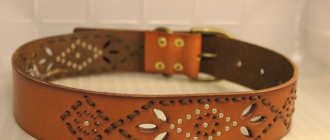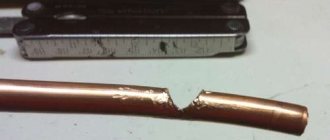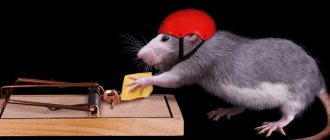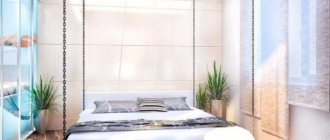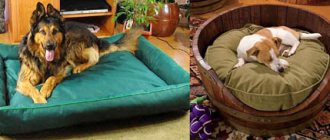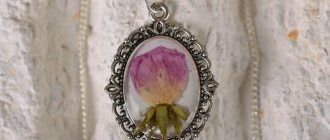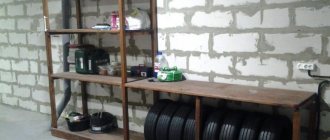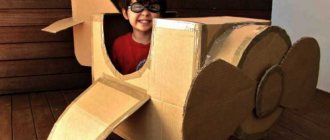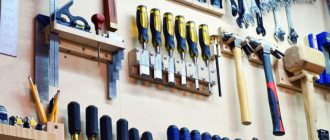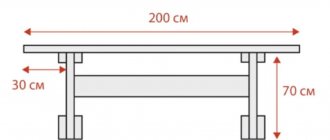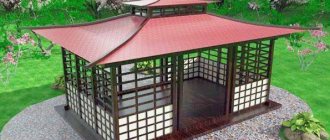Do-it-yourself busy board for children photo
A lot of attention is paid to the development of children. To help your baby learn to navigate reality and use everyday things correctly, there are special development boards - busy boards. The whole world owes their invention to the Italian Maria Montessori, who, having given birth to a baby, decided that everything in her house would be ideal from a pedagogical point of view. She cannot be called a discoverer, but it was she who organized all the available devices and created a toy that is used all over the world.
Even from the very cradle, babies are interested in everything and want to touch it: stick their fingers into a socket, play with a cabinet door, or simply master the mechanism of a door latch. As a rule, such entertainment is very dangerous. In this case, a busy board will be your faithful assistant. This educational board is absolutely safe for children of any age. The child will be happy, and the parents will be calm!
A very simple invention helps children develop fine motor skills at any age: from 1 year to 7-8 years. This educational toy will focus your child’s attention and help develop logic and coordination from a very early age.
How to make a busy board with your own hands
Types of busy boards
Busy boards are boards to the surface of which small elements surrounding the child in everyday life are attached. These can be a variety of chains, locks, latches, dummy sockets, laces, buttons. While playing, the child learns to use them himself and begins to understand why this or that element is needed.
Depending on the shape, all bodyboards are divided into several types:
- Boards are classic toys consisting of one board on which various elements are attached. Such toys can be placed on the floor or attached to a vertical surface.
- Double-sided or booklets . These toys are two boards installed on the floor or table in an unfolded “house” form. Here the game elements are attached on both sides. A very convenient device if there are two children at home.
- Houses are already multifunctional toys that have 6 active sides. Their sizes range from small to huge. Manufacturers offer various modifications of houses - with lighting, with a box for storing other toys.
- Cubes are modern models with 4 or 5 playing fields. These toys can be folded for easy storage. Their sizes also vary.
- Soft “puzzles” - intended for babies from 3 months to a year. They do not contain solid elements, and therefore the child will certainly not get hurt.
Depending on the model, a busy board can cost from 200 to several thousand rubles. However, if parents are excellent at using their hands and tools, then it is quite possible to save money and make a development board with your own hands. Moreover, at the same time, you can free your house from unnecessary trash. In addition, a board made with your own hands will definitely match your baby’s preferences.
Safety regulations
The main requirement is complete safety. Children are very inventive; a one-year-old baby may be interested in a shiny thing, and he will make every effort to try it on his teeth. Therefore, carefully check whether the elements of the board are firmly fixed, especially those on which it rests. It is better to avoid unreliable parts altogether. Observe the following precautions:
- Removable elements must be attached with a cord or a strong chain. Choose a short lace to prevent your baby from getting tangled.
- Important condition: if the set contains luminous parts, they should not be powered. The safest light bulbs are LEDs. They do not get very hot, so children's skin will not suffer from burns.
- It is better to sew the parts of a soft product together and glue them for reliability.
- Hide the batteries for sound and light components in compartments located at the back of the board, closed with small screws.
- No matter how safe a toy may seem, do not leave a child of any age to play unattended.
Busyboard: step-by-step instructions
Self-tapping screws, loops, and laces are used as fastening methods. This is especially true for classic boards that need to be attached to a vertical surface. Due to the design features, books, houses and cubes can be installed anywhere in the apartment.
A homemade board can be made in about 2-3 hours. Despite the fact that old switches, sockets, wires may have remained after the new renovation and are lying in the apartment “just in case” without use. It's time to use them to make educational games for your baby.
First of all, you need to decide what shape you will make the toy. The simplest option is a regular board. But if you wish, you can create any kind - a book, a cube or a house. By the way, the second option is very often made by dads with their daughters - doll houses from boxes or, if the parent knows how to handle plywood, then from this material.
DIY educational board for children
The basis
- For the base of a busy board, plywood with a thickness of 10-12 mm is usually used.
- You can also use 18 mm thick coniferous furniture board; you should not take more, as the product will be too heavy.
If you are planning products for very little ones, then you can consider the option of making a soft bodyboard from fabrics of various textures.
Let's take a step-by-step look at how to assemble a development board
In total, the process of creating a development board looks like this:
- Choosing the type of bodyboard.
- Selection of base board and its processing.
- Selection of elements.
- Marking the board.
- Fastening elements.
- Installation of the board.
- Find a small wooden board or regular plywood. The surface must first be prepared: sanded, painted or varnished. This is done so that the child does not put a splinter on himself. It is important to choose natural materials; artificial fabrics contain harmful impurities.
A piece of plywood, plastic, laminated chipboard is suitable as a base. Non-laminated material can harm the baby by splintering his fingers, and ordinary wood is too heavy and expensive.Pieces of thin plywood, plastic, laminate, and fiberboard are also used as doors and other inserts. If you are making a board designed to introduce your baby to the world of fabrics, you can cover the base with a piece of dense material or use thick corrugated cardboard as its base.
The size of the toy is selected in accordance with the age of the future user and the availability of free space in the room. The main condition is that the child must reach the desired object without leaving his place.
When everything is assembled, you can start assembling the bodyboard. If you don’t know what and how to place on the board, you can look at photos of toys on the Internet or go to a children’s store and get inspired there.
Do-it-yourself busy board for children (instructions) - Let's pick suitable elements. All elements are usually available at home. You can ask around from relatives, friends, acquaintances, or simply buy what you need in a store. In any case, the result will be much cheaper than buying a ready-made business board.
It is recommended to attach elements from various areas of life and everyday life and a variety of materials to the board. The child must get used to the touch of metal bolts, plastic buttons, and wooden doors.It is recommended to attach elements from various areas of life and everyday life and a variety of materials to the board. The child must get used to the touch of metal bolts, plastic buttons, and wooden doors.
Don't forget that the most important thing is safety. The child should not be injured by protruding parts or loose parts. Small nails, screws, and threads are used as fastenings;
- Let's arrange the parts on the board in a random order, leaving enough space between them to look neat;
- We secure them to the board with self-tapping screws or glue;
- Let's stick it funny pictures for empty spaces or fill the space with multi-colored paint to make it bright;
How to make a busy board for a child step by step - We board up the reverse side with the same board to hide traces of nails or screws for safe operation;
- We check every detail for strength;
- We make sure that our design does not pose any danger to the baby;
- Let's play together to show your child how it works.
DIY busy board for 3 years old
Accessories for busy boards
What do you need for a do-it-yourself business board?
What parts can be inserted onto the board? There are no clear rules in the selection of elements. Anything lying around or left after renovation in mezzanines and closets will do. The main thing is to remember safety! First of all, you need to carry out thorough disinfection with special detergents.
- 2-3 locks - with a key, chain, latch, latch or hook;
- Switches;
- Socket with plug;
- Wire or string with large beads;
- Bell, door lock;
- Chains;
- Wires or strings with large beads;
- Gears;
- Old telephone handsets with wire;
- TV remote control that you are not using;
- Magnets, Velcro;
- Jumper on a rope;
- Sneaker laces;
- Buttons
- Abacus
- Watch
- Labyrinths
- Sockets and plugs
- Lightning
- Mosaics
- Buttons
- Light and sound elements.
Accessories for a busy board
Master class on how to make a development kit for a child from plywood + drawings
So, everything in detail about bodyboard modeling. To be honest, there are no drawings here. There is nothing special to draw. You just need to draw your idea on a sheet of paper, where and what you want to see. Buy the necessary items. And then lay them out directly on the board (plywood), so to say try them on in person. And if you like it, you can screw it on.
Author
1. Cut out the base from a sheet of plywood or furniture board. Sand the surface of the base on both sides. We clean and level the sides of the base.
2. Cut out small squares from plywood and sand them.
3. Screw these squares onto the door hinges to the base.
4. You get a window that opens and closes. We screw handles to these squares to make it easier to open the window.
5. Make a lock on the window.
6. Screw the furniture wheel to the base. To do this, drill holes in the shield and screw in self-tapping screws.
7. Attach a round LED lamp to the base. We screw the switch.
8. Drill holes. We screw ring-screws into the base in 2 rows of 4 pieces.
9. Pass a lace through the rings and tie it.
10. Fasten the door chain lock.
11. Cut out a buckle with a piece of belt from the seat belt. We put the belt on the screws.
12. To screw the switch, remove the upper part of it. Screw the bottom one to the board. And we put the upper one on the lower part.
13. Screw on a small dough shaker with a rotating shaft. To ensure that the shaft rotates freely, we insert nuts under the rocker handles.
14. Attach a hanger hook to the base.
15. The xylophone can also be attached to the base. We make holes in the xylophone sticks. We tie a rope to the ring. We thread the second edge of the rope into the hole of the xylophone stick. We hang the ring from the hook on the base. And we tie the second stick in the same way.
We screw in 2 ring-screws under the hook. We thread the sticks into these rings.
16. We screw a couple more padlocks to the board. We put a lock or carabiner on each of them.
17. Glue magnets to the barrels with lotto numbers.
18. Glue other magnets to the board.
19. Now you can magnetize the barrels to the board. Just first we make a through hole in each barrel. We pass a rope through it. Twist one end of the rope into a knot.
We tie the second end of the rope to a ring-screw, which is screwed into the base.
We use self-tapping screws to secure the zipper lock to the base.
19. Using self-tapping screws, fasten 2 strips of Velcro.
20. We insert a carabiner into the ring-screw. We screw the screw to the base. We screw a few more screw rings into the base, only smaller ones.
21. We tie a rope to the first ring. We string beads with letters onto a string. We pass the rope through the second ring. And we tie the edge of the rope to the last ring.
In order to fit many different objects and games for your toddler on the board, it is important to plan where each object will be located, and then screw or glue it to the base.
Another cool idea is to make a chest of drawers for toys with such a development board. But for this you will already need some tools. Watch the video for details.
DIY bodyboard for girls
A girl's board can be decorated with pink ribbons, multi-colored laces, textile pockets with attached clothing accessories : buttons, snaps, zipper or Velcro. By adding decorations from artificial flowers and butterflies, you can easily make your princess’s favorite toy. At the very top of the board you can write the girl’s name, this will make the board unique, belonging to her.
DIY busy board for girls
How are business boards useful?
High-quality and properly made bodyboards can develop a child almost from infancy. They develop fine motor skills , which are necessary for proper brain function. In addition, they help improve:
- concentration;
- memory;
- perseverance and patience;
- logical thinking;
- imagination. For this purpose, boards with images of heroes and fairy-tale characters are specially created. The child independently comes up with a story and embodies it on his board;
- understanding what certain actions lead to. For example, the child opened the zipper and found in his pocket the key to the lock that opens the door, etc.;
- safe introduction to household items.
Some boards are designed to prepare a child for school, teach him to count and read.
Baby training
The purpose of playing with bizybord is not the game itself, but learning through the game.
With the help of a “smart” board they develop:
- Small and large motor skills.
- Attentiveness and independence.
- Spatial-imaginative thinking.
- Zeal.
- Sensitivity.
- Creativity.
- Logic and memory.
- Improving speech (the development of fine motor skills stimulates the activity of the speech apparatus).
- Skills (fasten a button or button, tie a bow, open a lock).
- Understanding the patterns of the surrounding world.
- The habit of spending leisure time actively.
Do-it-yourself busy board for a child 3+
For older children, more complex design options are used.
- Strings with large beads for learning to count. So that he doesn’t just mindlessly finger the beads, but also learns to count;
- Velcro letters. To be able to study the alphabet and compose new words;
- Pictures of animals and birds on Velcro or magnets. He will definitely enjoy meeting new friends through the use of an educational board;
- Install an LED strip (multi-colored) around the perimeter of the board to remember the colors.
We supply electricity
For further successful progress from learned generalizations to their practical application, busy boards need to be electrified.
The best option for a power source (PS) is an old telephone charger at 5.6 V 800 mA. Power from the charger is supplied to the outlet; You can also install a 1 A fuse there. The input of all power supply circuits of the business board is connected to a plug with a cord. Hence the simplest, but most necessary association: insert a plug into a socket - something may light up (pos. 4), ring, and play. Put it in incorrectly - click, don’t click, there will be no jokes.
Children's piano for bodyboard
If the business board is thoroughly equipped with electrical equipment: general lighting, illumination of elements, telephone, see below; perhaps a children's piano for toddlers (see figure on the right) or a simple homemade radio receiver with PLL (phase locked loop) tuned to a local FM station, then it is highly advisable to bring the busy board controls into one place or combine them into a remote control module, pos. 5-7. This will give the child initial skills in centralized management of remote processes. In modern life, they are, perhaps, more necessary than in ancient times and the Middle Ages, the ability to wield weapons.
Telephone
No less than remote control skills, these days we need concepts about the operation of telecommunications. Their child can get it from the same old “number number” if you use his regular contacts. The dialer has 2 pairs of contacts: pulse contacts (IR) are closed all the time, except for the reverse motion of the disk under the action of the return spring. On the return stroke, the IRs periodically open, transmitting the dialed digit to the telephone exchange by the number of breaks in the linear circuit. The shutter contacts of the ShK close as soon as the disk is moved from its original position. In the telephone set, they short-circuit the telephone capsule of the Tf (earphone) so that it does not crackle in the ear when dialing.
The simplest scheme for simulating communication on a business board with a dialer is given in pos. 1 pic. I turned the disk a little - the LED lit up, signaling the opening of the channel (establishment of communication). Release the disk - the LED will blink as many times as the number entered.
Schemes for simulating the operation of telecommunications on a business board
You can supplement the light indication with sound by adding a call from the same phone to the circuit, but it will need to be redone. Inductor call signal in a wired telephone line with pulse dialing – 100 V 25 Hz; from constant 5 V the bell will not work. In addition, the telephone call arm is held in any of the extreme positions by a weak magnet so that it does not ring when the device is moved. We need to remove the old winding from the bell and wrap it around the frame until the enameled wire with a diameter of 0.32-0.4 mm is filled.
The diagram of a communication simulator with double indication is given in pos. 2. As soon as the CC is closed, the VD1 LED will light up, or, instead, a 6 V light bulb. This is an indication of the readiness of the device; analogous to the ether icon on a mobile phone. At the first opening of the IR, current will flow through the bell winding; it will store some energy; the winding will seem to be charged; There may or may not be a ringing here, but one of the multi-colored LEDs VD3/4 will light up; VD3/4 can be 2-sided 2-color LED.
Then, when the disk moves in reverse, the current through the bell winding, due to the phenomenon of self-induction, will flow in one direction or the other, and there will be a double ringing for each digit except the first. VD3/4 will blink. Clarity of ringing is achieved by selecting a resistor of 10-47 Ohms.
To receive the number of rings exactly equal to the dialed digit, one of the bell cups must be turned. The mounting holes of the cups are shifted to the side from the axis of symmetry for the initial installation of sound. It is possible to unscrew the cup so that the striker does not reach it.
Finally, if you have twin children or the same age, or you yourself wouldn’t mind “hanging out” with your child at the busy board, and there are 2 old telephone receivers with Mk carbon microphones, according to the diagram in pos. 3, you can assemble a “real” telephone on which you can talk. Then you need to check whether their polarity is marked on the headphones in the tubes, and turn on the telephone capsules accordingly. power polarity, otherwise it will be hard to hear.
Note: this scheme works with Soviet calls from TA-67 devices and others. The call parameters of other devices vary greatly. If there is no bell, you can try connecting a 100-200 Ohm resistor to the IR circuit, then VD3/4 needs to be connected directly to the bell. Another option is to turn on the bell through a 10-100 uF capacitor. It is possible to connect a 400 Hz dial tone generator to the circuit, but it is not necessary. There is no such signal in mobile communications, and the connection setup begins immediately with dialing a number.
Do-it-yourself busy board house for a child
A more complex design of the most common developmental bodyboard. The peculiarity is that development elements can be installed on all four walls of the house, and even on the roof. Your baby will definitely appreciate such a gift.
- By installing a doorbell or bell, you can create the semblance of a real house, only doll size;
- Having made a door , you can put dolls and toys inside (so that toys are not scattered throughout the house, teach your child to put them to sleep in his “house”)
- Such a variety of toys will concentrate the baby’s attention and allow him to play for a long time;
- If there are 2 or more children in a family, this design will help avoid swearing and sharing the fun . Everyone will find something to do on one side of the “house”.
History and significance
An educational board for a child is an invention of the Italian teacher Maria Montessori. She made a significant contribution to the education of children with normally delayed development, i.e. without congenital mental defects, but lagging behind their peers within the natural range. Normally slow children then catch up and often surpass their peers. The percentage of outstanding figures who grew up from normally retarded children is higher than from ordinary ones. People like Thomas Alva Edison, Albert Einstein and many others were “slow” in childhood. But if a normally slow child is bullied: “Stupid! Moron! No!”, then he has every chance to grow up to be what he was called: unscrupulous, deceitful, two-faced, irresponsible, immoral, arrogant, shameless, an aggressive sociopath and a moral monster.
Note: a children's development board will help a child with fairly serious disabilities enter society, for example. Down syndrome. But only as prescribed by a doctor and under the supervision of an experienced teacher.
Life cards for making yourself
- You can use everything you have at home;
- Make it soft: cover it with a blanket or cotton wool. This will help reduce the risk of injury;
- Paints are exclusively water-based and do not carry yourself toxic substances. Or better yet, hypoallergenic;
- Involve the child in the manufacturing process, thereby making him feel like a little builder;
- Create any shape: rectangle, circle, oval. A unique copy that only you have;
- Possibility of replacing structures (complicate the elements as the baby grows) so that the child does not lose interest in the toy.
DIY educational boardsHaving made one board, you can easily make for your child any educational toy that will be most interesting to the child.
Let's start comparing
Imaginative (abstract, associative) thinking in a person begins to develop around the age of 3, but its foundations are laid a year or two earlier. All living things feel the passage of time, so a children’s watch with arrow markings is needed on the bodyboard (item 1 in the next figure); preferably ones that actually work. Using them, the baby will learn to compare the course of observed processes with his biological clock and adjust his actions to the passage of time. Since the time periods on the clock are indicated, they will also be a bridge to higher degrees of generalization.
Elements of a busy board for the development of associative thinking
The highest degree of generalization is a number, a figure. The great mathematician David Hilbert once said: “God created the integers. Everything else comes from the imperfection of our mind.” If a child quickly understands that 5 candies, 5 doors in an apartment, 5 different flowers in pots and 5 floors in a house are still 5, he has all the makings of achieving outstanding success in any field of activity.
The transition of generalization from a simple collection of objects to their quantity, and from quantity to its numerical expression, begins with counting: there, different quantities of homogeneous objects are visibly different. If the child does not seem particularly capable, spinning from different but similar objects, shown above in Fig., will help the transition from a heap to an aggregate. on right. However, if the objects are very different (see below), then this will not help the matter; on the contrary, it will worsen the situation.
Aids for developing abstract thinking on a busy board
For the transition from an intuitively perceptible quantity to its numerical (digital) expression, modernity offers a powerful tool - a working calculator, pos. 2. On a busy board, it can be powered from a common source (see below). The calculator, in turn, will become a link for the transition to actions based on generalization, see below, because The areas of its keyboard are functionally different. Therefore, for a busy board, it is better to find a children’s calculator with color-coded keyboard areas. True, they offer something small and bad for sale.
The dialer from an old telephone, pos., very well reinforces the concept of correspondence between a set, a number and the digit denoting it. 3. This is an ordered digitized rattle, signaling the correspondence of the action to the number and figure immediately to vision, hearing and touch.
Gears
In the associative block of a business board for boys, a gear model with a gear ratio other than 1 will be very useful, see figure:
Gear model for bodyboard
It was the gear that gave impetus to the rapid development of technology. Ancient mechanisms based on an inclined plane (wedge, screw) and a lever (block, gate) could not cope with this task. A child who understands how a gear drive works will have no problems with mechanics and technology at all. You just need to make handles on both gears so that the little ones understand which gear is accelerating and decelerating and what is the ratio of torques in them.
Make a busy board with your own hands or buy it in a store?
This survey will help you weigh the pros and cons and make a choice: make it at home yourself or buy a ready-made one. In the +/- column you can note important points for yourself.
And remember, handmade work will bring a lot of pleasure not only to you, but also to the child who can watch the construction process.
| Indicators | Myself | Buy | +/- |
| Time (cost of production/purchase) | 2-10 hours (depending on difficulty level) | 10 min | |
| Price | Free if you have available supplies at home | From 2,000 to 10,000 thousand rubles | |
| Room | It is better to find a separate room for sanding or painting boards. | Not required | |
| Tools | Basic set: sandpaper, screwdriver, jigsaw. Possibly paint and glue | Not required | |
| Quality | Made with high quality using only natural, hypoallergenic materials with care for the baby’s health | No guarantee | |
| Guarantee | Durable. If something breaks, you can always tighten it up or re-glue it at home | Standard manufacturer's warranty up to 6 months. |
Tools
To make a classic wooden bodyboard you will need:
- Roulette,
- Square,
- Hacksaw,
- Screwdriver,
- Sandpaper,
- Drill,
- Screwdriver,
- Scissors,
- Pliers,
- Self-tapping screws or nails.
Having a jigsaw and a grinder will greatly facilitate the process.
How to choose a busy board
Educational toys should be chosen based primarily on the age and interests of the baby. Some parents buy “boy” boards for boys and girls’ boards for girls. But all children are different. So, for girls they usually buy boards with sewing supplies, and for boys - with sockets, locks, light bulbs, etc.
Parents do not think about the fact that their sons need the ability to tie their shoelaces and zip up their own zippers, while their daughters will use sockets and switches quite often in everyday life. In addition, every person, even a small one, has a predisposition in certain sciences.
Next, you should take into account all the preferences and age of the child. It will be difficult for a child to cope with opening the lock with a key, and an older child will not be interested in rolling the ball around a circle.
Filling
It is necessary to stock up on accessories to fill the product.
Suitable for filling a busy board:
- Everything related to electrical: plugs, sockets, switches, toggle switches, doorbell
- Plumbing accessories: pipes, tap valves
- Locks: padlocks, bolts, chains
- Laces and ribbons
- Wheels
- Furniture handles
- Zippers and buttons
- Pieces of fabric of different textures, leather
- Whatever your ingenuity can do
Paints and paintwork products, brushes for decorative crafts. It is also possible to use stickers, self-adhesive colored paper and other elements for decoration.
